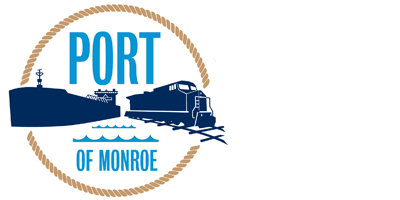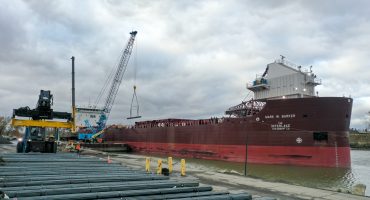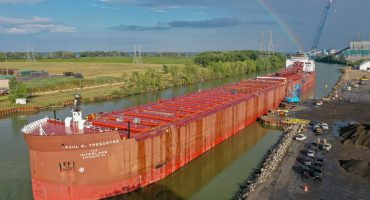
Port of Monroe Aims to Expand Opportunities for Michigan Agriculture
Michigan Soybean Committee and Specialty Soya and Grains Alliance look for new ways to move soybeans on the Saint Lawrence Seaway to benefit soybean growers.
St. Johns, Michigan (May 1, 2024) – Located 25 miles south of Detroit, the Port of Monroe is Michigan’s only port on Lake Erie. The Port’s proximity to both Detroit and Toledo markets, coupled with its convenient access to rail and major highways, highlights not only the massive potential for growth but also the important role the Port plays in the Great Lakes shipping system. The Port is currently undergoing large improvements that will allow it to capitalize on this potential.
The Port was a recipient of a 2022 Port Infrastructure Development Program (PIDP) grant from the U.S. Department of Transportation. This grant will be utilized to improve port operations by rehabilitating existing facilities and constructing new infrastructure. The PIDP award represents the largest single investment in the Port’s infrastructure since its inception. Between all current projects, over $30 million in federal, state and local funds will be spent to improve the Port’s infrastructure.
As a part of the revitalization, the Port of Monroe is developing the Michigan Maritime Gateway, which will be the first maritime container terminal in the State of Michigan. This state-of-the-art facility will serve as a modern border entry point, revolutionizing logistics in the region and granting unprecedented access to global markets. It will be the inaugural SAFE ACT compliant port in the Great Lakes system, ensuring adherence to the highest standards of security and operational excellence with primary lane x-ray and radiation scanning.
Michigan Soybean Committee (MSC) CEO, Ben Steyer, states “We are looking forward to collaborating with the Port of Monroe to identify strategies that can be used to integrate agricultural commodities into their operations. This partnership signifies an exciting opportunity to enhance the efficiency and diversity of the Port’s activities while bolstering support for local soybean farmers. Together, we aim to explore innovative solutions to optimize logistics and foster economic growth within the agricultural sector and the broader community.”
The Port of Monroe is directly connected to the Great Lakes Saint Lawrence Seaway system that connects all five Great Lakes with the Atlantic Ocean through the Saint Lawrence River. The Saint Lawrence Seaway is currently an underutilized shipping option, running at about half of its potential capacity.
Steve Peach, a Michigan soybean farmer and MSC’s liaison to the Specialty Soya and Grains Alliance (SSGA) recently had the opportunity to tour the Port of Monroe. Steve shared, “We had an opportunity to explore the potential benefits of increasing the Port’s capacity for handling of agricultural products if a container facility is built. Specialty products, including soybeans, that require containerized shipping to Europe, the Middle East, Africa and other markets could take advantage of the Port of Monroe as an efficient and environmentally friendly shipping option.”
As this project continues to develop, the Port and Michigan farmers are discussing how this new facility can work to support our state’s diverse agriculture industry. “The Port of Monroe holds untapped opportunity for Michigan’s agriculture industry, and we are excited to work with MSC and Michigan agribusinesses to leverage our infrastructure to create new supply chain solutions for Michigan-grown agricultural products,” states Port of Monroe Development Coordinator, Samuel Hankinson.

Pictured from lest to right: Shane Frederick (SSGA), Gary Williams (SSGA), Ben Steyer (MSC), Steve Peach (MSC), Sam Hankinson (Port of Monroe), Hanna Campbell (MSC), Eric Wenberg (SSGA) and Max Vekich (Federal Maritime Commission)



